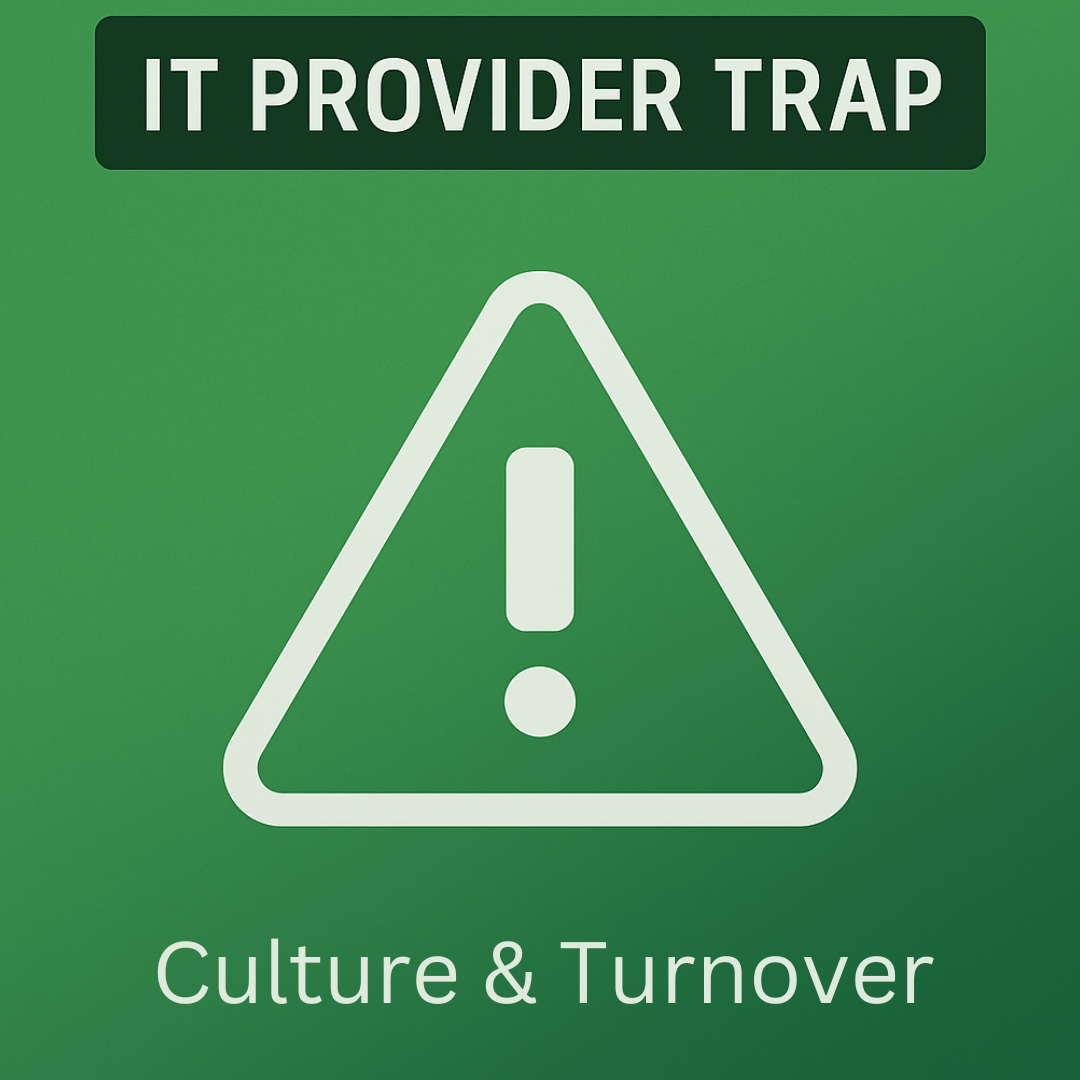Great tools won’t save a bad culture. When your IT provider runs hot—constant churn, burnout, and a rush-it-out-the-door mindset—the cracks show up in your day-to-day.
1) High staff churn and burnout
New names keep popping up on tickets. You re-explain your environment, decisions change mid-project, and senior folks vanish just when things get tricky. Burnout looks like short replies, half-fixed issues, and a revolving door of “new to your account.” Tribal knowledge walks out the door, and you pay for the same discovery work twice.
2) Rushed, inconsistent service
When a team is stretched thin, speed replaces care. You see copy-paste fixes, different answers to the same problem, and tickets closed because a step was attempted—not because the user confirmed it worked. Reopens rise, and simple problems boomerang because no one had time to find the root cause.
3) Lack of internal accountability and improvement
If there’s no time (or appetite) for learning and improvement, the same mistakes repeat. No post-incident reviews. No playbooks updated after a miss. Feedback is asked for but not acted on. Training gets deferred, junior people are thrown into the deep end, and “we’ll fix the process later” becomes the norm.
4) Won’t own their own mistakes
Everyone makes mistakes. Mature teams say it out loud—“we missed this”—explain what happened in plain English, and outline what they’ll do differently. You may not see all the internal fixes, but you should see a short note that owns it and confirms next steps. If every story shifts blame (“vendor issue,” “edge case”) and no one ever says “that was on us,” you can’t trust them to fix it—because they don’t admit it.
Quick self-check: are you feeling their churn?
- You keep re-explaining your setup to new people, and escalations slow when a senior contact leaves with no backfill.
- Different answers depending on who picks up, and fixes feel copy-paste.
- Tickets close without the requester confirming the fix—and the same issue reopens.
- Feedback is collected but nothing changes the next month or quarter.
- After a provider-caused miss, the update never says “that was on us,” nor names who will fix the root cause and by when.
- The same misstep shows up again because no corrective action was tracked to done.
If two or more hit, you’re not seeing a technical problem—you’re seeing culture and turnover bleed into service quality.
Want the full checklist of red flags (and how to avoid them)? Grab the white paper:
The IT Provider Trap – How to Spot Danger Signs Before Your Business Pays the Price
Next up: Part 10 — “When IT Stops Supporting Growth: Outdated Tools, No Plan, and Zero Lift”
